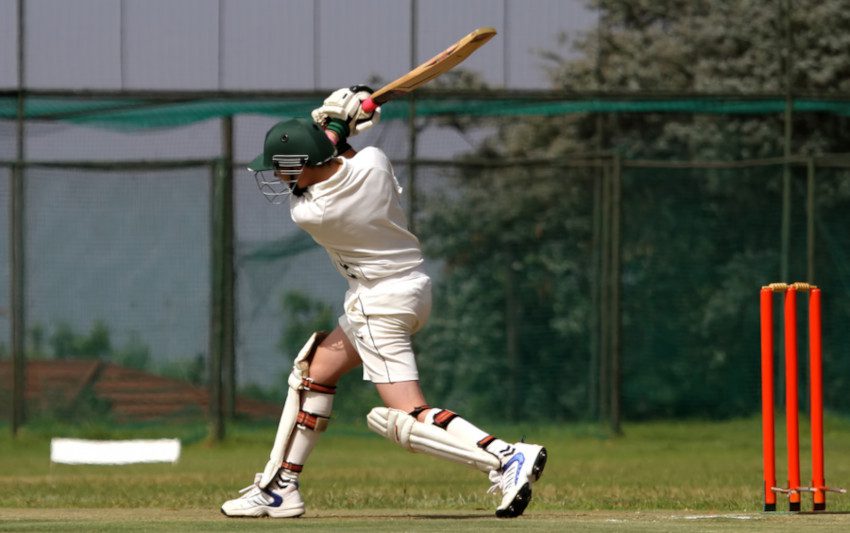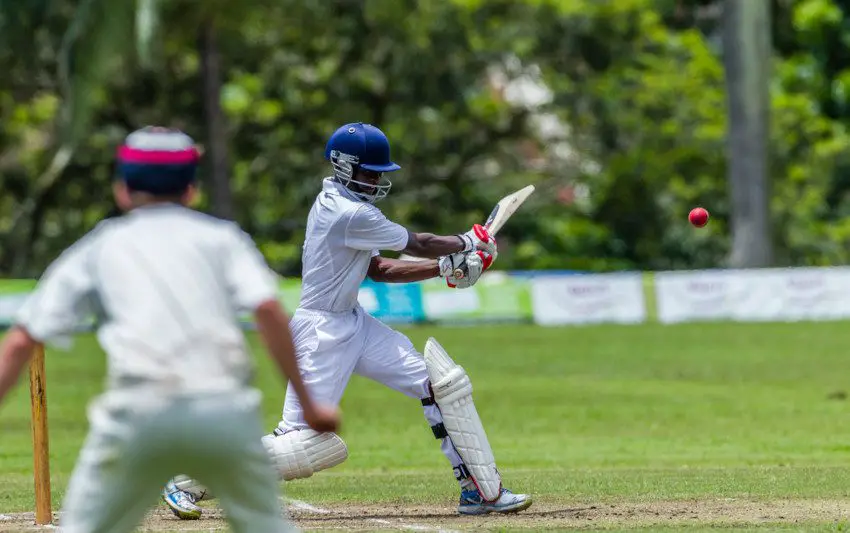Table of Contents
Cricket teams field a varied bowling attack, including fast bowlers, which can be put into three categories – pace, seam and swing. Seam and swing bowling cause the ball to behave differently than it would have done had it followed its original trajectory. The best bowlers tend to master one of those arts, but they will likely be competent in all three disciplines.
In the following article, you’ll get to understand the differences between swing and seam bowling, and what are the key factors affecting your delivery.
In Short: Swing Bowling vs Seam Bowling
The aim for seam and swing bowlers is to use their techniques to ultimately dismiss a batsman. Fast bowlers rely mainly on their pace while a seamer looks for the ball to hit the seam when it hits the pitch. It can deviate from this point to deceive the batsman.
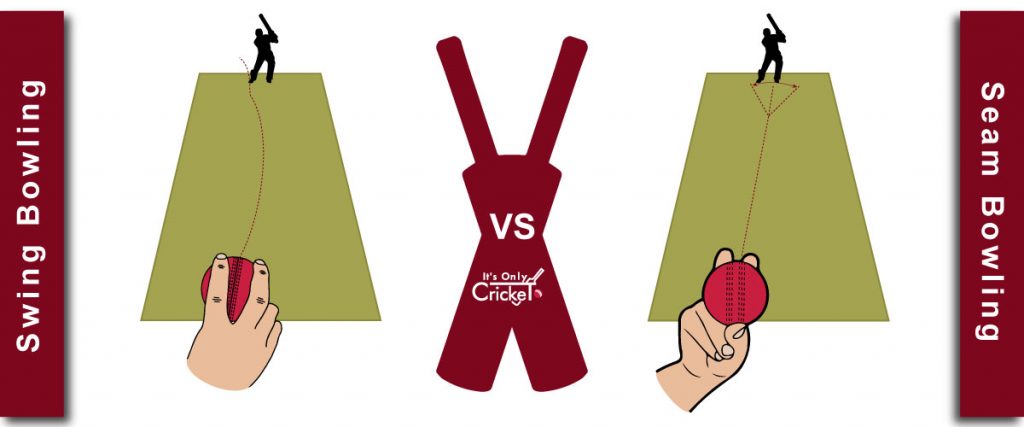
A swing bowler relies on movement in the air: There are a number of different techniques that see the ball swing on delivery which makes it harder for the batter to contend with. In professional cricket, many bowlers will be known for one of those three techniques – pace, swing and seam. Most will, however, attempt a combination of two or possibly all three.
The Factors Affecting Cricket Balls
A cricket ball can be affected by many different factors and these start in the manufacturing stages. Across the world, there are three main balls used and these are produced by Kookaburra, Dukes and SG.
The main difference between the three lies in the seam and this can affect how the ball swings and moves off the pitch. Some seams are small, while others are more pronounced. With Kookaburra, the balls have a tendency to swing early before the seam starts to deteriorate after around 30 overs. The Dukes balls are more durable and can swing and seam for longer.
In contrast, the SG balls offer little assistance to the quicker bowlers. They are mainly used in India and other parts of Asia where spin bowlers are more prevalent.
The weather can also affect the behaviour of the ball. Overcast conditions and cloud cover can cause the ball to swing more than it would under clear skies. Nobody is entirely sure why this happens, but cloudy conditions can certainly aid swing bowlers.
The third most common factor affecting cricket balls is the pitch. If it is green with a greater covering of grass, there may be more movement off the seam. In contrast, a dry and dusty pitch is more likely to favour the spin bowlers rather than the faster members of the attack.
These are external factors but there are certain points that are within the control of the fielding side. Players are no longer allowed to apply saliva, but they can use sweat on the ball with a view to keeping it shiny on one side. The other side of the ball is left alone to allow it to rough up naturally. The players are not, however, allowed to alter the condition of the ball by any artificial means.
Swing Bowling in Cricket
Swing bowling is a difficult art to master on a consistent basis. At times, the condition of the ball will combine with overcast skies to provide a perfect situation for most bowlers to obtain some swing. However, the best swing bowlers can use this art, even when those conditions are not in their favour.
When a ball swings prodigiously it is very difficult for the batsman to defend his or her wicket. The trajectory is unpredictable as the ball changes its line after it leaves the bowler’s hand. For that reason, it’s advisable for new players to study the science behind swing.
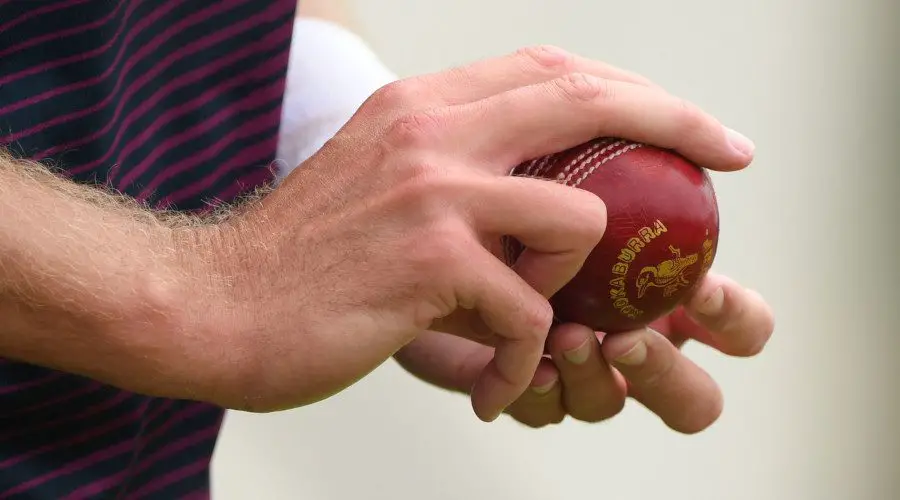
The Physics Behind Swing Bowling
When a fielding side shines one side of the ball while leaving the other to deteriorate naturally, they are applying a rule of physics that can help that ball to swing. As the ball leaves the bowler’s hand, airflow will behave differently on each side and the rough side should swing in to or away from the batsman depending on the where it has been positioned by the bowler.
Any form of swing bowling is dependent on that air flow. As the bowler delivers the ball, a thin layer of air forms around it. This is known as the boundary layer but it cannot form to cover the entire surface of the ball and it will separate at certain points. The point of separation will determine the pressure on the ball.
Crucially, swing will be generated if the pressure is different on either side of the ball. This is why the fielding side treats the two individual hemispheres of the ball differently.
Types of Swing Bowling
With conventional swing bowling, the bowler is either looking for inswing or outswing. Inswing bowling sees the ball swing in to the batsman while outswing leads to it moving away.
The seam is important here because it acts as a rudder, guiding the ball in the direction that the bowler wants it to swing. If the seam is angled to the slips on the point of delivery, the bowler is looking for outswing, away from the batsman. In contrast, with the seam angled into the batsman, the bowler is aiming for inswing which would take the ball into the stumps.
There is a second factor to consider and this is reverse swing. This is a relatively new phenomenon which is believed to have been discovered in the early 1980s.
What is Reverse Swing in Cricket?
With reverse swing, the ball behaves in the opposite way from conventional swing. So, when the ball is angled to the slips on point of delivery, it will swing in to the batsman rather than away. Additionally, a ball angled towards the stumps will swing away to the slips.
The science states that reverse swing can occur when a ball becomes older and the roughness on one side reaches a certain state. Speed is essential and only the faster bowlers, whose deliveries approach and exceed the 90mph mark, can perfect reverse swing on a consistent basis. Reverse swing can be even more difficult for batters to deal with, as they are expecting the ball to move in the way that traditional swing would.
Contrast Swing
Another form of delivery that is rarely talked about is referred to as ‘contrast swing’. This can occur when the seam is held upright and delivered between the middle and index fingers of the bowler’s hand. Because that seam is straight, the bowler can achieve a higher speed and this makes contrast swing much more difficult to play. However, this is a technique that can be effective for bowlers of any pace.
The ball has a greater tendency to move towards the shiny side when contrast swing has been achieved.
Famous Swing Bowlers
Pakistan have produced some of the best swing bowlers in the history of cricket but there is only one man who has earned the title ‘the King of Swing’. Wasim Akram played 104 tests and took 414 wickets and this remains a record for a Pakistan international. Along with Waqar Younis, Wasim formed a devastating bowling partnership that delivered effective swing bowling in the 1980s and early 1990s.
Wasim and Waqar learned their trade from former Pakistan captain Imran Khan. Imran is widely credited as being the first bowler to identify and perfect the art of reverse swing.
Of those who are still playing the game, England’s Jimmy Anderson is considered by many to be the best swing bowler around. Anderson picked up his 700th test match wicket in 2024 and he retired from the game with more test victims than any other fast bowler in the game’s history.
The New Zealand pair of Tim Southee and Trent Boult have also been effective as swing bowlers in all forms of the game.
Other great swing bowlers, of the recent past include Sir Richard Hadlee, Dale Steyn, Zaheer Khan and Chaminda Vaas.
Seam Bowling in Cricket
Seam bowling requires the bowler to deliver the ball so that the seam hits the pitch when it lands. When this happens, it can cause a random deviation which makes it harder for the batsman to play.
Those who employ the technique are referred to as seam bowlers or seamers.
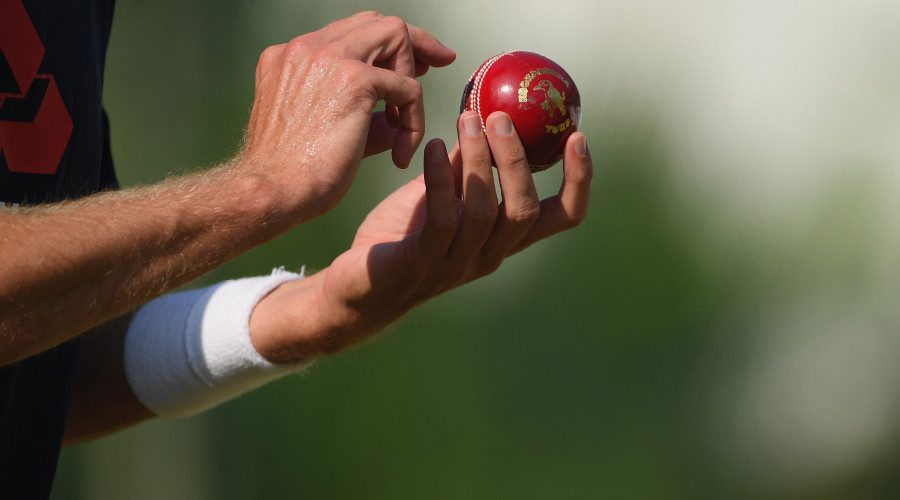
The Physics Behind Seam Bowling
The addition of the outer seam means that a cricket ball is not perfectly spherical. If it were, it would be much easier for the batsmen to play and harder for the bowlers to take wickets. The seam is a useful ally to any bowler but the quicker men can use extra speed to greater advantage.
If a ball’s seam hits the pitch on delivery, it can react randomly. There is a chance that it will go straight on but it can also deviate and come off the pitch at an angle. This means that the batsman has to play the ball off the pitch rather than in the air and he or she has less time to react as a result.
Bowlers cannot be certain as to how the ball will behave if it hits the seam. Their task is to attempt to land that seam on the surface but it’s a difficult art to perfect. Traditional seam bowling requires the bowler to hold the ball between the index finger and middle finger. The seam is held upright with the aim for it to move vertically and straight through the air.
The bowler’s wrist must also be as straight as possible when the ball is delivered. If the ball doesn’t deviate through the air, the seam should then hit the pitch. Windy conditions can affect the flight and, in addition, if there is swing movement, the ball is less likely to hit the seam on impact with the pitch.
In recent times, bowlers have looked to innovate and use different grips which can also help the ball to hit the seam. The deliveries that are produced are referred to as ‘cutters’ and they are designed to help the bowler gain more control over the direction in which the ball moves.
By holding the seam at an angle and rolling the fingers over the ball at the point of delivery, it is possible to bowl a deliberate off cutter. If the bowler executes this skill correctly, the ball will either move from off to leg or leg to off.
By bowling cutters, the delivery will naturally be slower and this can give the batsman more time to adjust and play an effective stroke. The slowness can also provide an element of surprise if the bowler is generally delivering at speeds of 80mph and above. Other bowlers such as Paul Collingwood of England would employ cutters most of the time. With slower speeds involved, it can be much harder for batsmen to time the ball correctly.
Famous Seam Bowlers
When cricket enthusiasts talk about bowlers with a perfect wrist position, one name usually comes to mind. Australia’s Glenn McGrath was not the quickest of bowlers and, even in his prime, would frequently deliver the ball in the low 80s mph. However, he managed to deliver the ball with an almost-perfectly straight wrist.
As a master of seam bowling, McGrath finished his playing career with 563 test match wickets. This was a record for a quicker bowler until it was subsequently broken by Jimmy Anderson many years later. Other great seamers from the past include India’s Kapil Dev and Shaun Pollock of South Africa who both claimed over 400 test wickets in their careers.
Of the seam bowlers still playing the game, Tim Southee, Jasprit Bumrah and Josh Hazlewood are considered to be among the best.
Up and Coming Swing and Seam Bowlers

When James Anderson was asked to retire by the England management in 2024, the search was on to find a replacement. England had tried Matthew Potts, and while he had enjoyed a productive start to his test career, he began to fade after a few games.
The team may have found the answer in Gus Atkinson the Surrey seamer. His pace is a little down on that of Mark Wood and Joffra Archer, but he has good speeds, and he hits the seam on a regular basis. I haven’t seen him swing the ball as much, but that quality might come when the conditions are right.
Pakistan have a lot of fast bowling talent, but there always seems to be a level of inconsistency. When he’s on form and the conditions are in his favor, Shaheen Shah Afridi seems almost unplayable. Naseem Shah also looks impressive, but he’s another bowler who needs to address those issues over consistency.
Over in South Africa, I’ve been impressed with Marco Jansen. A tall left armer, he seems to naturally bring the ball into the right handed batters. He also has good speed and his extra height encourages more bounce off the pitch.
If I’ve missed any other promising seam and swing bowlers, get in touch and have your say.
Conclusion
Swing bowling and seam bowling are two very different techniques which are both used with the aim of producing the same result. The task is to deceive and ultimately dismiss a batsman and these two arts can give the bowler an advantage.
The key difference between the two methods is that swing bowling sees the ball deviate in the air while seam bowling allows it to move off the pitch. In theory, swing bowling can give a batsman more time to react but it’s difficult to play a ball that changes its trajectory while in flight.
Seam bowling offers less time for batters to consider the path of the delivery as they have to read it from when it bounces off the pitch. Both techniques, when delivered at speed, can be equally hard to contend with, so swing and seam are essential parts of any bowling attack’s armoury – along with pace bowling.

